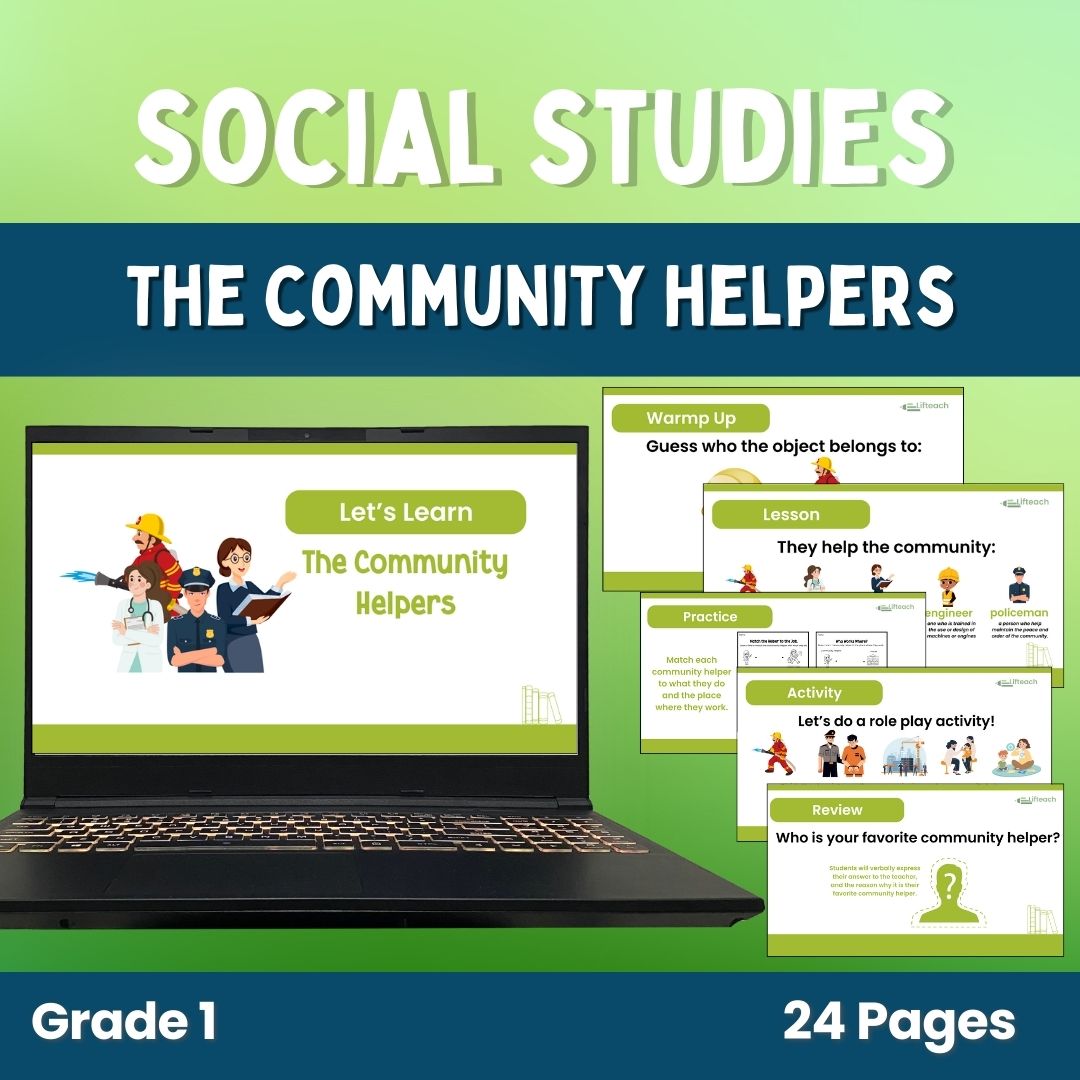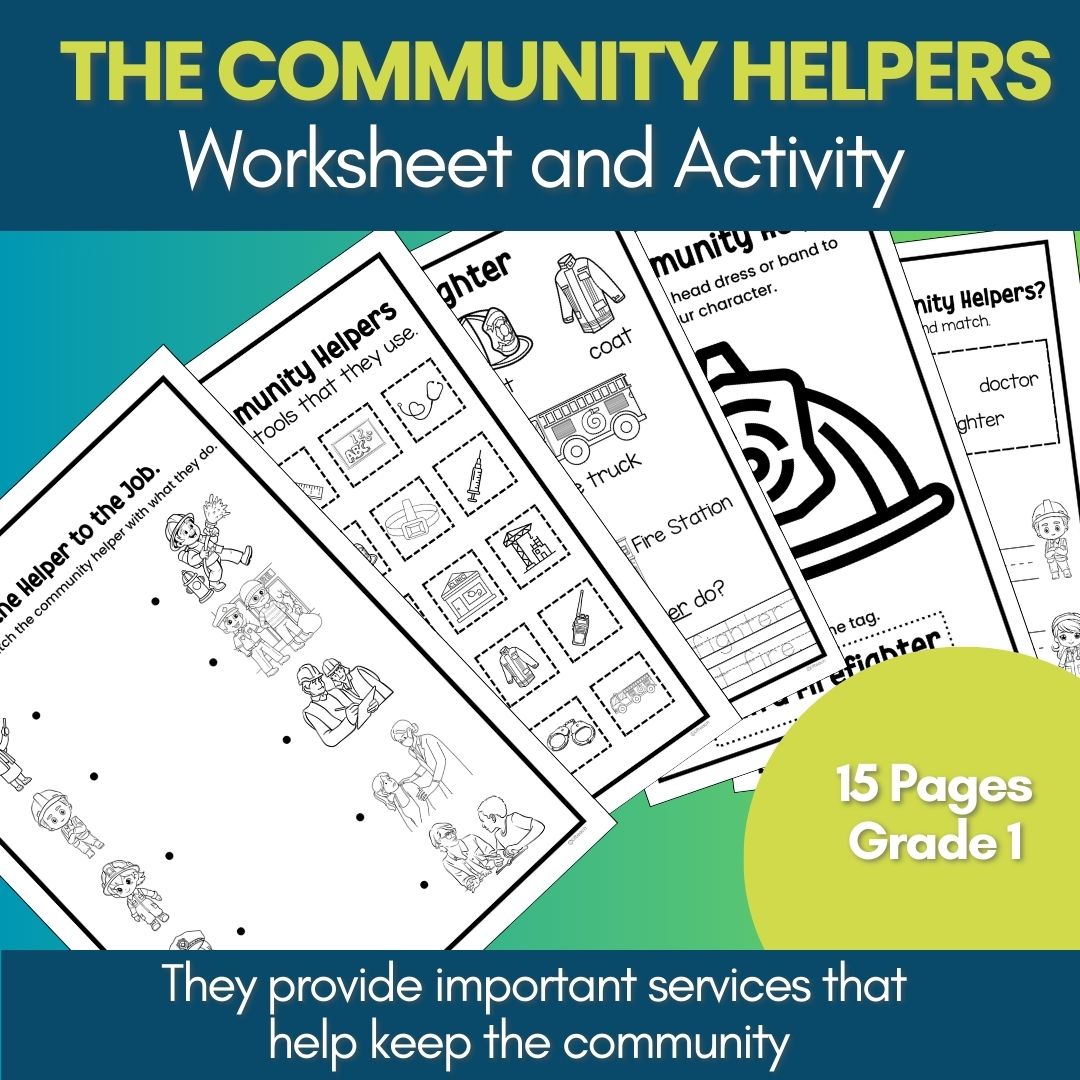Lesson Plan: Living and Working Together as Communities
Grade Level: Grade 1
Subject: Social Studies
Duration: 50 minutes
1. Learning Objectives
By the end of this lesson, students will be able to:
- Identify various roles individuals play in their community (e.g., teacher, police officer, doctor).
- Describe how these roles help the community function smoothly.
- Explain the importance of working together in a community.
2. Alignment with Educational Standards
- Social Studies Standards: Understand the roles of community helpers and the concept of cooperation in a community setting.
- Common Core Standards (CCSS.ELA-LITERACY.SL.1.1): Participate in collaborative conversations with diverse partners about grade 1 topics and texts.
- Social Emotional Learning (SEL): Develop skills to work collaboratively and appreciate diversity.
3. Engaging Instructional Activities and Teaching Strategies
Introduction (10 minutes)
- Begin with a large piece of chart paper titled “Our Community Helpers.”
- Ask students to brainstorm community helpers they know, writing each response on the chart.
- Introduce the key roles (e.g., teachers, doctors, firefighters) with corresponding visuals.
- Ask students to match the pictures to the corresponding community helper activity and workplace.
Direct Instruction (15 minutes)
- Show or introduce different community helpers in a slideshow.
- Flash the photo and ask questions like, “What does this person do for our community?”
Interactive Activity (20 minutes)
- Role-Playing Game:
– Split the class into small groups. Assign each group a community helper.
– Students will cut and create their tools (e.g., engineer hat, mask, etc.) for students to role-play their assigned community helper.
– After 5-10 minutes, allow each group to present their role to the class and explain how they help the community.
- Label and Match:
– Students will cut and label tools in correspondence to the community helpers.
Closing Activity (5 minutes)
- Conclude the lesson by summarizing key points about why community helpers are important.
- Ask students to share one thing they learned today about working together in a community.
4. Required Materials and Resources
- Chart paper and markers
- Visual aids for community helpers (pictures, props)
- Access to a short video/slideshow about community helpers
- Props for role-playing activity (toy tools, costumes, etc.)
5. Assessment Methods
- Observation: Monitor student participation during discussions and role-playing.
- Exit Ticket: At the end of class, have students remember the community helpers that they have learned.
- Verbal Reflection: Ask students to share one way they can help their community.
6. Differentiation Strategies
- For Advanced Learners: Encourage them to come up with an additional community helper not discussed and present it to the class.
- For Struggling Learners: Provide students visual support and one-on-one guidance during the role-playing activity. Use sentence starters during discussions to help with articulation.
- For English Language Learners (ELL): Use visuals and props extensively. Pair them with peers who can help explain concepts in simpler terms or their first language.
7. Timeline for Lesson Components
| Time | Activity | Description |
| 10 mins | Introduction | Read-aloud and discussion |
| 10 mins | Direct Instruction | Discuss roles of community helpers |
| 15 mins | Interactive Activity | Group work on chart paper |
| 10 mins | Creative Activity | Individual drawing and sharing |
| 5 mins | Closure | Review and share learning |
This lesson plan is designed to engage first-grade students in understanding the functions of government and community helpers while promoting collaboration and communication skills.
lesson


